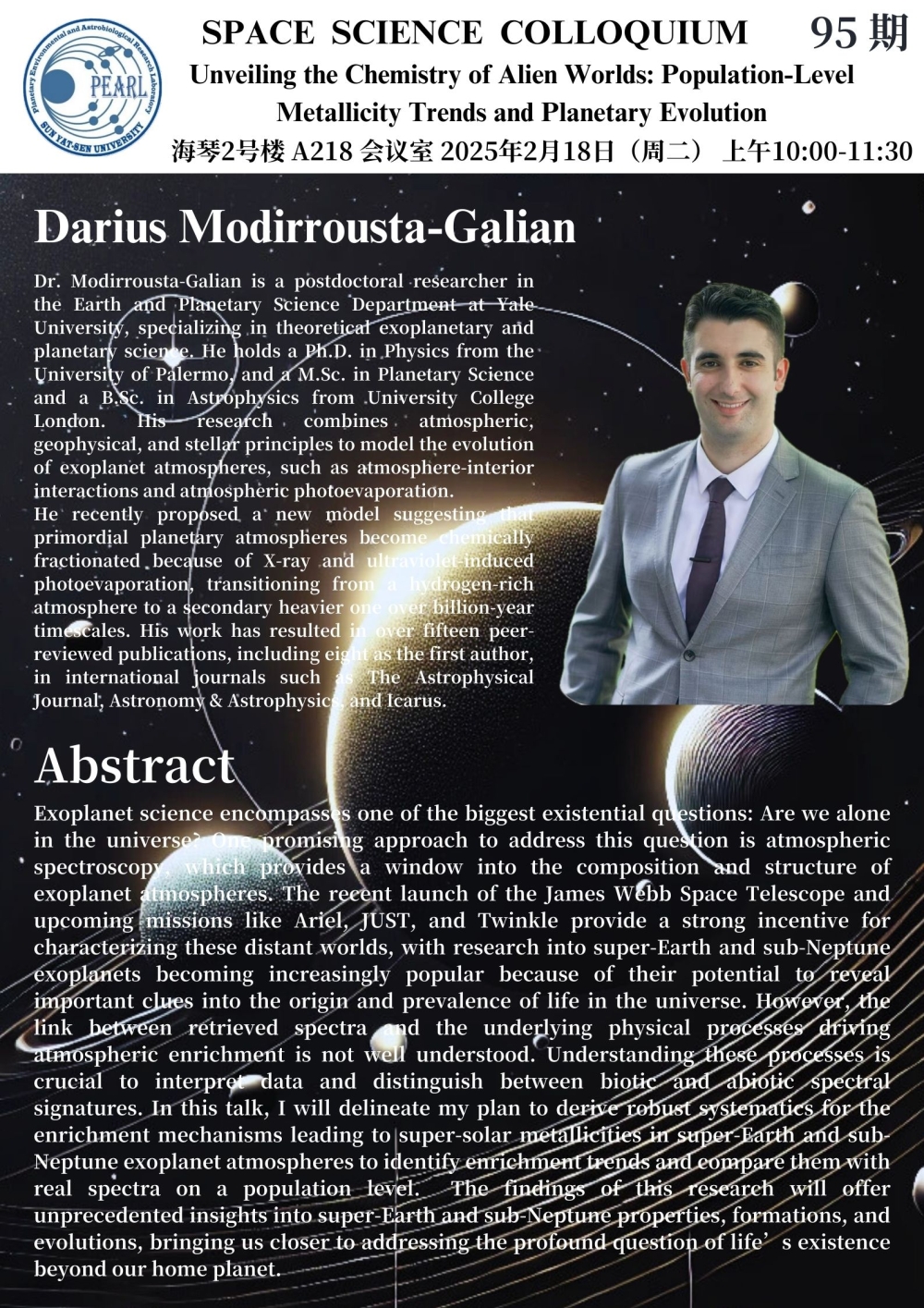Unveiling the Chemistry of Alien Worlds: Population-Level Metallicity Trends and Planetary Evolution
Unveiling the Chemistry of Alien Worlds: Population-Level Metallicity Trends and Planetary Evolution

Abstract:Exoplanet science encompasses one of the biggest existential questions: Are we alone in the universe? One promising approach to address this question is atmospheric spectroscopy, which provides a window into the composition and structure of exoplanet atmospheres. The recent launch of the James Webb Space Telescope and upcoming missions like Ariel, JUST, and Twinkle provide a strong incentive for characterizing these distant worlds, with research into super-Earth and sub-Neptune exoplanets becoming increasingly popular because of their potential to reveal important clues into the origin and prevalence of life in the universe. However, the link between retrieved spectra and the underlying physical processes driving atmospheric enrichment is not well understood. Understanding these processes is crucial to interpret data and distinguish between biotic and abiotic spectral signatures. In this talk, I will delineate my plan to derive robust systematics for the enrichment mechanisms leading to super-solar metallicities in super-Earth and sub-Neptune exoplanet atmospheres to identify enrichment trends and compare them with real spectra on a population level. The findings of this research will offer unprecedented insights into super-Earth and sub-Neptune properties, formations, and evolutions, bringing us closer to addressing the profound question of life’s existence beyond our home planet.
Bio:Dr. Modirrousta-Galian is a postdoctoral researcher in the Earth and Planetary Science Department at Yale University, specializing in theoretical exoplanetary and planetary science. He holds a Ph.D. in Physics from the University of Palermo, and a M.Sc. in Planetary Science and a B.Sc. in Astrophysics from University College London. His research combines atmospheric, geophysical, and stellar principles to model the evolution of exoplanet atmospheres, such as atmosphere-interior interactions and atmospheric photoevaporation.
He recently proposed a new model suggesting that primordial planetary atmospheres become chemically fractionated because of X-ray and ultraviolet-induced photoevaporation, transitioning from a hydrogen-rich atmosphere to a secondary heavier one over billion-year timescales. His work has resulted in over fifteen peer-reviewed publications, including eight as the first author, in international journals such as The Astrophysical Journal, Astronomy & Astrophysics, and Icarus.


